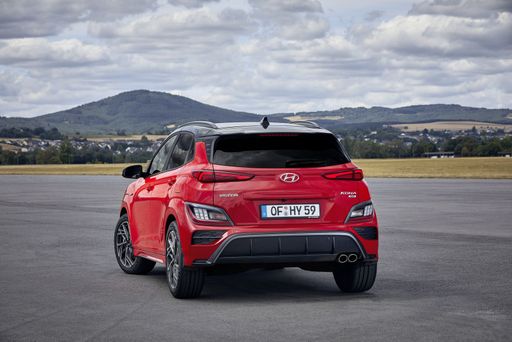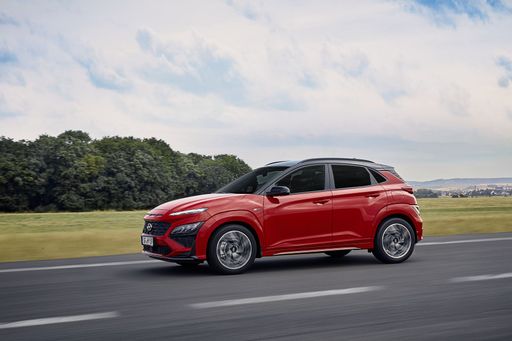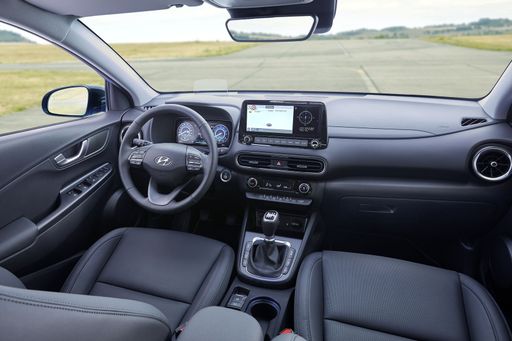Hyundai Kona vs Kia EV4 Hatchback – Which one offers the better deal?
Compare performance, boot capacity, efficiency and price at a glance.
Find out which car is the better choice for you – Hyundai Kona or Kia EV4 Hatchback?
Costs and Efficiency:
Price and efficiency are often the first things buyers look at. Here it becomes clear which model has the long-term edge – whether at the pump, the plug, or in purchase price.
Hyundai Kona has a distinct advantage in terms of price – it starts at 23100 £, while the Kia EV4 Hatchback costs 32200 £. That’s a price difference of around 9163 £.
In terms of energy consumption, the advantage goes to the Hyundai Kona: with 14.60 kWh per 100 km, it’s minimal more efficient than the Kia EV4 Hatchback with 14.90 kWh. That’s a difference of about 0.30 kWh.
As for range, the Kia EV4 Hatchback performs to a small extent better – achieving up to 625 km, about 111 km more than the Hyundai Kona.
Engine and Performance:
Under the bonnet, it becomes clear which model is tuned for sportiness and which one takes the lead when you hit the accelerator.
When it comes to engine power, the Hyundai Kona has a slight edge – offering 218 HP compared to 204 HP. That’s roughly 14 HP more horsepower.
In acceleration from 0 to 100 km/h, the Kia EV4 Hatchback is hardly perceptible quicker – completing the sprint in 7.40 s, while the Hyundai Kona takes 7.80 s. That’s about 0.40 s faster.
In terms of top speed, the Hyundai Kona performs somewhat better – reaching 210 km/h, while the Kia EV4 Hatchback tops out at 170 km/h. The difference is around 40 km/h.
There’s also a difference in torque: Kia EV4 Hatchback pulls barely noticeable stronger with 283 Nm compared to 265 Nm. That’s about 18 Nm difference.
Space and Everyday Use:
Whether family car or daily driver – which one offers more room, flexibility and comfort?
Both vehicles offer seating for 5 people.
In curb weight, Hyundai Kona is clearly perceptible lighter – 1370 kg compared to 1811 kg. The difference is around 441 kg.
In terms of boot space, the Hyundai Kona offers hardly perceptible more room – 466 L compared to 435 L. That’s a difference of about 31 L.
In maximum load capacity, the Kia EV4 Hatchback performs slight better – up to 1415 L, which is about 115 L more than the Hyundai Kona.
When it comes to payload, Hyundai Kona minimal takes the win – 490 kg compared to 459 kg. That’s a difference of about 31 kg.
Who wins the race?
The Hyundai Kona proves to be wins the duel decisively and therefore becomes our DriveDuel Champion!
Hyundai Kona is the better all-rounder in this comparison.

Hyundai Kona
Hyundai Kona
The Hyundai Kona blends a bold design with a versatile interior, making it a standout choice in the compact SUV market. Its crisp handling and responsive steering provide an engaging driving experience, whether in the city or on the open road. The vehicle also offers a range of features designed to enhance comfort and connectivity, ensuring a pleasurable journey for both driver and passengers.
details @ hyundai.news
@ hyundai.news
 @ hyundai.news
@ hyundai.news
 @ hyundai.news
@ hyundai.news
 @ hyundai.news
@ hyundai.news
Kia EV4 Hatchback
The Kia EV4 Hatchback paves the way for a sleek and efficient driving experience, capturing attention with its modern design and eco-friendly performance. Built with comfort and sustainability in mind, this hatchback redefines electric mobility for urban explorers and suburban commuters alike. Inside, the EV4 boasts a spacious and tech-savvy interior, offering drivers and passengers a seamless blend of innovation and practicality.
details

|
|
|
|
|
Costs and Consumption |
|
|---|---|
|
Price
23100 - 41600 £
|
Price
32200 - 42400 £
|
|
Consumption L/100km
4.6 - 7 L
|
Consumption L/100km
-
|
|
Consumption kWh/100km
14.6 - 16.8 kWh
|
Consumption kWh/100km
14.9 - 16.2 kWh
|
|
Electric Range
377 - 514 km
|
Electric Range
440 - 625 km
|
|
Battery Capacity
1.3 - 65.4 kWh
|
Battery Capacity
58.3 - 81.4 kWh
|
|
co2
0 - 163 g/km
|
co2
0 g/km
|
|
Fuel tank capacity
38 - 47 L
|
Fuel tank capacity
-
|
Dimensions and Body |
|
|---|---|
|
Body Type
SUV
|
Body Type
Hatchback
|
|
Seats
5
|
Seats
5
|
|
Doors
5
|
Doors
5
|
|
Curb weight
1370 - 1773 kg
|
Curb weight
1811 - 1910 kg
|
|
Trunk capacity
466 L
|
Trunk capacity
435 L
|
|
Length
4350 - 4385 mm
|
Length
4430 - 4450 mm
|
|
Width
1825 mm
|
Width
1860 mm
|
|
Height
1580 - 1585 mm
|
Height
1485 mm
|
|
Max trunk capacity
1300 L
|
Max trunk capacity
1415 L
|
|
Payload
420 - 490 kg
|
Payload
445 - 459 kg
|
Engine and Performance |
|
|---|---|
|
Engine Type
Electric, Petrol, Full Hybrid
|
Engine Type
Electric
|
|
Transmission
Automatic, Manuel
|
Transmission
Automatic
|
|
Transmission Detail
Manual Gearbox, Dual-Clutch Automatic
|
Transmission Detail
Reduction Gearbox
|
|
Drive Type
Front-Wheel Drive, All-Wheel Drive
|
Drive Type
Front-Wheel Drive
|
|
Power HP
115 - 218 HP
|
Power HP
204 HP
|
|
Acceleration 0-100km/h
7.8 - 11.9 s
|
Acceleration 0-100km/h
7.4 - 7.8 s
|
|
Max Speed
162 - 210 km/h
|
Max Speed
170 km/h
|
|
Torque
200 - 265 Nm
|
Torque
283 Nm
|
|
Number of Cylinders
3 - 4
|
Number of Cylinders
-
|
|
Power kW
85 - 160 kW
|
Power kW
150 kW
|
|
Engine capacity
998 - 1598 cm3
|
Engine capacity
-
|
General |
|
|---|---|
|
Model Year
2024 - 2025
|
Model Year
2025
|
|
CO2 Efficiency Class
A, D, C, E, F
|
CO2 Efficiency Class
A
|
|
Brand
Hyundai
|
Brand
Kia
|
Is the Hyundai Kona offered with different drivetrains?
Available configurations include Front-Wheel Drive or All-Wheel Drive.
The prices and data displayed are estimates based on German list prices and may vary by country. This information is not legally binding.
